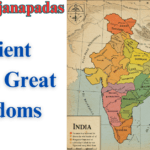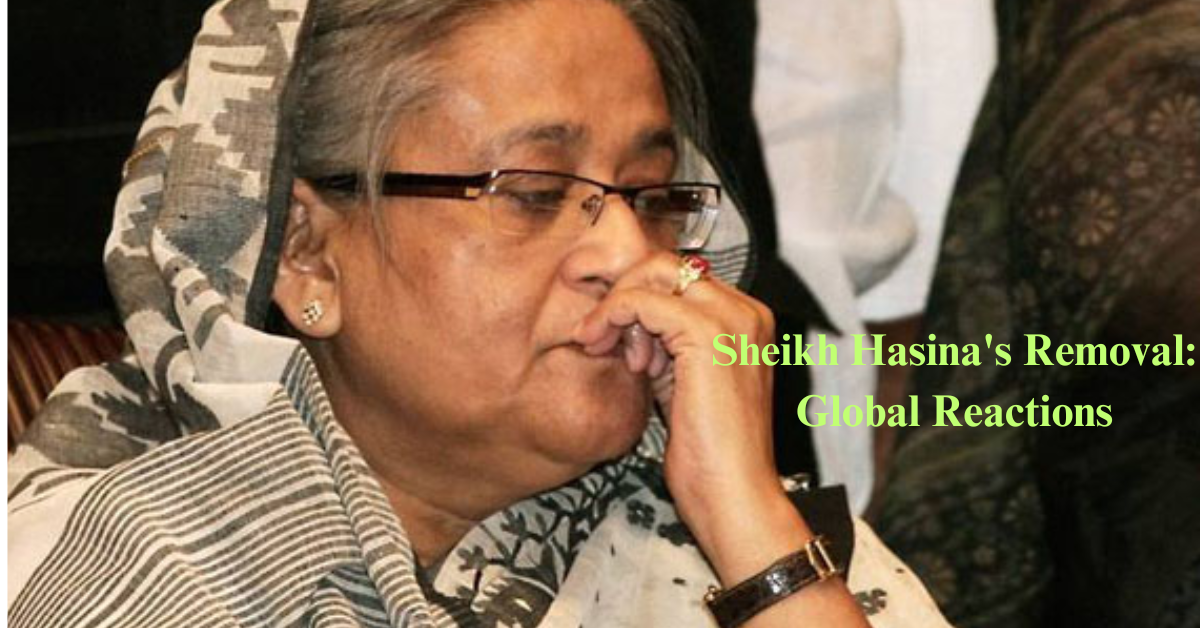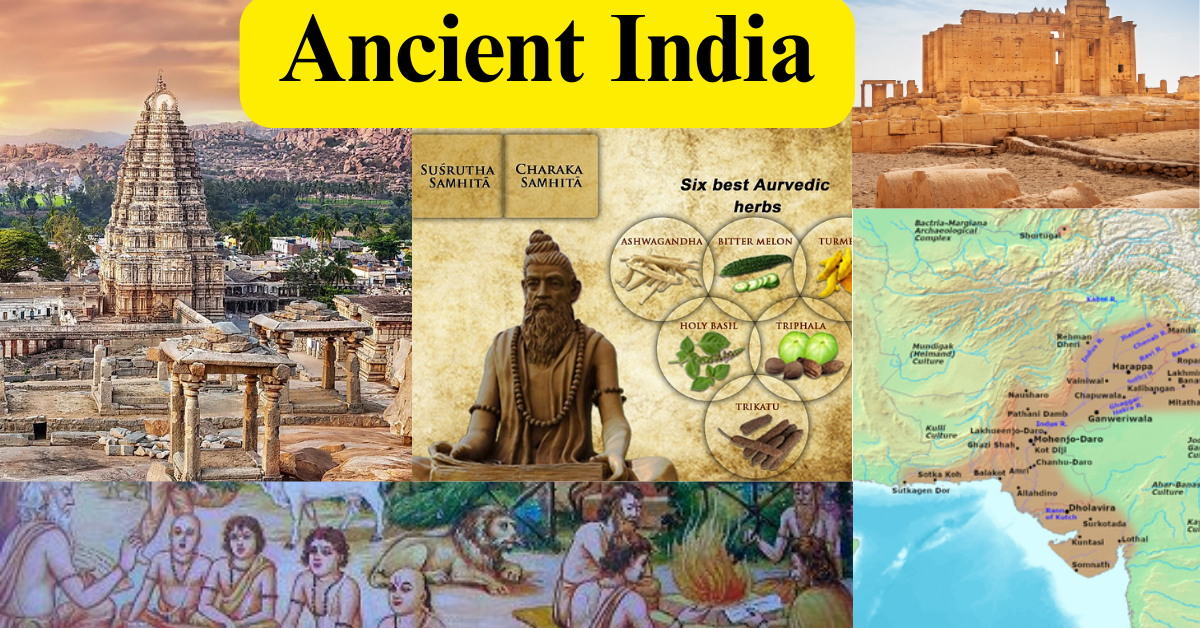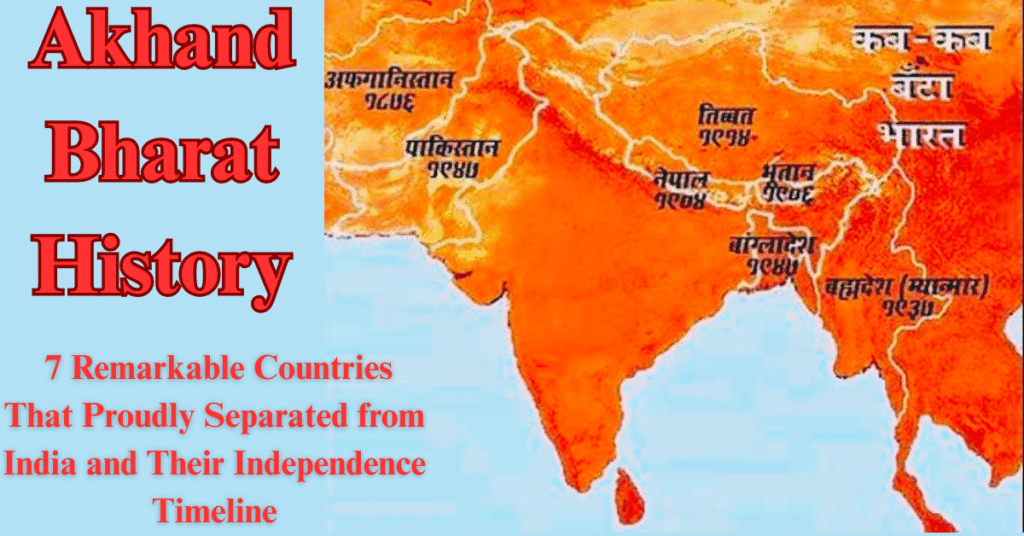
Table of Contents
Akhand Bharat History
Akhand Bharat History : The idea of Akhand Bharat (Undivided India) refers to the great Indian subcontinent, which was once united culturally, spiritually, and economically under different empires such as the Mauryas, Guptas, Mughals, and later the British. Over centuries, due to colonial interventions, regional aspirations, and political struggles, several modern nations emerged out of this shared geography.
Here’s a detailed look at the countries that were once part of or deeply connected to Akhand Bharat and when they became independent.
Akhand Bharat History
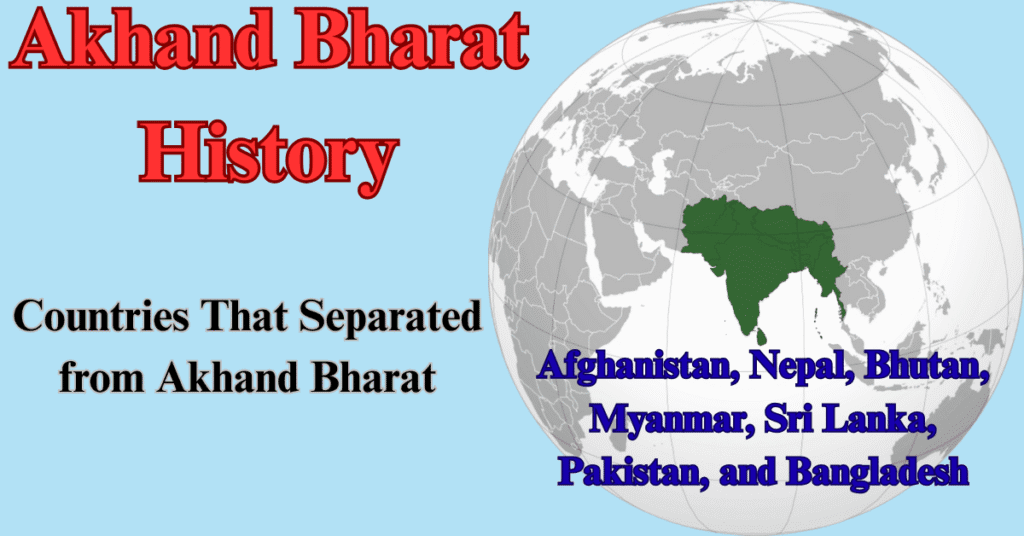
1. Afghanistan – 1919
Afghanistan has always been a strategic region in South Asian history. During the Maurya and Kushan Empires, it was culturally linked to India through Buddhism and trade routes. Later, it became a battleground for British and Russian influence (the “Great Game”).
- Key Event: After the Third Anglo-Afghan War (1919), Afghanistan signed the Treaty of Rawalpindi, officially ending British suzerainty.
- Why It Separated: Afghanistan wanted complete sovereignty and rejected colonial dominance.
- Present Connection: Despite political differences, Afghanistan shares deep historical Buddhist and Hindu heritage linked to ancient India.
2. Nepal – 1904
Nepal, the land of the Himalayas and birthplace of Lord Buddha, had strong spiritual and cultural ties with India.
- Key Event: In 1904, after the British expedition to Tibet, Nepal signed treaties that distanced it from direct Indian political influence, asserting its sovereignty.
- Why It Separated: Nepal always maintained independence but came under British influence. Gradually, it remained outside the Indian Union after 1947.
- Present Connection: Religious pilgrimages (Pashupatinath Temple, Janakpur – birthplace of Sita) still keep India and Nepal culturally united.
3. Bhutan – 1907
Bhutan, the “Land of the Thunder Dragon,” has historically been influenced by Indian spirituality and Buddhism.
- Key Event: In 1907, Bhutan became a hereditary monarchy and signed the Treaty of Punakha with the British, granting internal sovereignty while Britain handled external affairs.
- Why It Separated: Geographic isolation and unique cultural identity led Bhutan to remain outside the Indian Union.
- Present Connection: India and Bhutan share a special friendship, with India supporting Bhutan’s economic and security needs.
4. Myanmar (Burma) – 1948
Myanmar, once part of British India, had a shared history with India under colonial rule. Indians migrated to Burma in large numbers for trade, labor, and administration.
- Key Event: In 1937, the British separated Burma from India administratively. Finally, on January 4, 1948, Myanmar gained independence.
- Why It Separated: Distinct ethnic identity, language, and anti-colonial struggle led Burma to demand a separate nation.
- Present Connection: Cultural ties continue through Buddhism, trade, and shared colonial history.
5. Sri Lanka – 1948
Sri Lanka, earlier known as Ceylon, has always been spiritually connected to India due to Buddhism brought by Emperor Ashoka’s children and shared mythological references from the Ramayana.
- Key Event: On February 4, 1948, Sri Lanka became an independent nation after centuries of colonial rule by Portuguese, Dutch, and British powers.
- Why It Separated: Although close to India geographically and culturally, Sri Lanka developed its independent political system under British rule.
- Present Connection: Religious pilgrimages, cultural festivals, and trade continue to bind India and Sri Lanka.
6. Pakistan – 1947
The partition of India in 1947 is one of the most defining and painful moments in South Asian history.
- Key Event: On August 14, 1947, Pakistan was carved out of British India based on religious lines, creating two nations—India and Pakistan.
- Why It Separated: The demand for a separate Muslim nation under Muhammad Ali Jinnah and the failure of communal harmony led to Partition.
- Impact: Over 10 million people were displaced, and nearly 1–2 million lost their lives in communal violence.
- Present Connection: Despite political hostility, India and Pakistan share centuries of cultural, linguistic, and historical connections.
7. Bangladesh – 1971
Bangladesh was originally East Pakistan after the 1947 partition. However, linguistic and cultural suppression by West Pakistan created resentment.
- Key Event: With India’s support during the Bangladesh Liberation War, East Pakistan became independent on December 16, 1971, after Pakistan’s defeat.
- Why It Separated: Cultural identity (Bengali language, heritage) and economic inequality led to independence.
- Present Connection: Today, India and Bangladesh enjoy strong ties through trade, cultural exchange, and historical friendship.
Akhand Bharat History
Broader Perspective on Akhand Bharat
The dream of Akhand Bharat is not about political unification but about recognizing the shared civilizational heritage of South Asia. From the spread of Buddhism and Hinduism to the shared struggles against colonialism, the nations that separated from India are still connected through culture, food, traditions, languages, and spirituality.
Akhand Bharat History
Conclusion
The fragmentation of Akhand Bharat gave birth to new nations—Afghanistan, Nepal, Bhutan, Myanmar, Sri Lanka, Pakistan, and Bangladesh. While political maps may have changed, the civilizational bonds remain unbroken. The idea of Akhand Bharat today serves as a reminder of the region’s shared history, unity in diversity, and cultural depth.
AkhandBharat #IndianHistory #SouthAsia #Partition1947 #Bangladesh1971 #SriLanka1948 #Myanmar1948 #Afghanistan1919 #Bhutan1907 #Nepal1904
